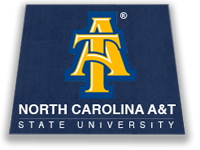Below is a summary of the abstract you submitted. Presenting author(s) is shown in bold.
If any changes need to be made, you can modify the abstract or change the authors.
You can also download a .docx version of this abstract.
If there are any problems, please email Dan at dar78@pitt.edu and he'll take care of them!
This abstract was last modified on May 8, 2017 at 5:12 p.m..

During the Fall of 2016 the two SEA-PHAGES classes at North Carolina Agricultural and Technical State University (NC A&T) isolated ten phages from environmental samples using Mycobacterium smegmatis mc<sup>2</sup>155 as the host organism. All ten were isolated from enrichment cultures using standard SEA-PHAGES protocols. DNA extracted from four of the ten phages was sequenced at Pittsburgh Bacteriophage Institute. All four phages proved to be novel. Two of the four sequenced phages, Aggie and Philonius, were found to be in Cluster N, a small cluster that contains 23 sequenced and verified members, representing only 1.2% of the total number of phages in the Actinobacteriophage database. Both phages were isolated from soil samples collected on the campus of NC A&T in Greensboro, North Carolina. Aggie and Philonius have genome lengths of 44,333 bp and 43,886 bp respectively; both have a GC content of 66.5%. These values are in line with the Cluster N averages of 66.2% GC content and 43,111 bp genome length. Genomes were annotated using DNA Master and PECAAN with input from Phamerator and Starterator. The genomes of Aggie and Philonius show a high degree of sequence homology with the exception of one region, less than 3,000 base pairs in length. Aragorn v.1.2.38 identified a tRNA gene for threonine in the genomes of both Aggie and Philonius, but this gene occurs in a forward reading frame within gene 35, a reverse gene that codes for an immunity repressor. Because of the overlap, the tRNA gene was excluded from the final annotation. During annotation, we investigated the usefulness of the protein structure prediction program I-TASSER as a tool to gain information about the structure and function of select gene products beyond that obtained from BLAST, HHpred, and the Conserved Domain Database.

